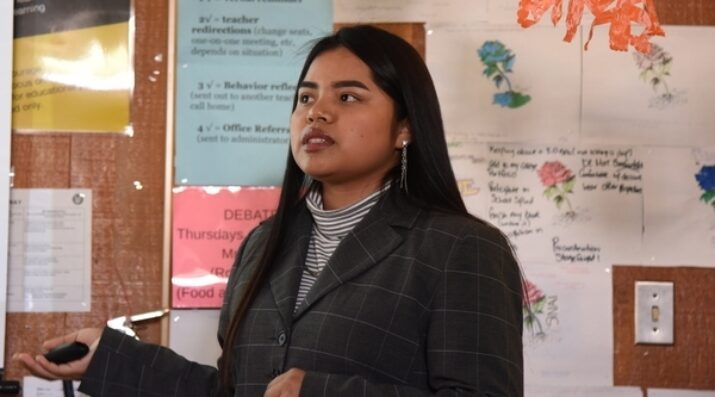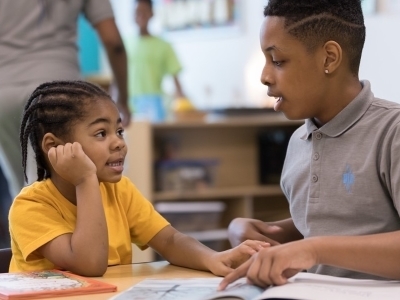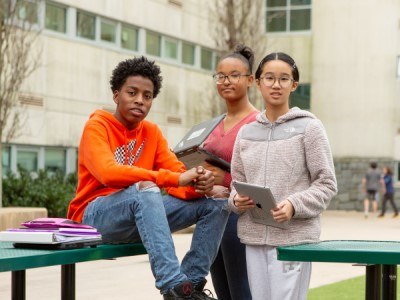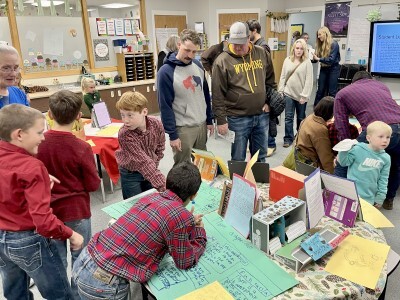18 Things You Will See If You Are Doing Ethical Assessment in Your School
Topics

Educators are rethinking the purposes, forms, and nature of assessment. Beyond testing mastery of traditional content knowledge—an essential task, but not nearly sufficient—educators are designing assessment for learning as an integral part of the learning process.
Theory is one thing. What does it look like in the wild?
Ethical Assessment has a definition—it is truthful, it is aligned to the kid, it is kind, and it is for good—but I was asked by friends at Del Lago Academy, a school in Escondido Union School District, California, the following question: “What does it look like on the ground? If you are doing Ethical Assessment what will you see and hear and feel?”
My approach to Ethical Assessment grew organically out of my years of work in Performance Assessment and Competency-Based Learning, and a growing conviction that our entreaties to teachers that they should adopt performance- and competency-based practices are inadequate. In fact, just as much as adopting these practices is necessary and moral, to not adopt these practices would be unethical. In 2010 we started calling this the Ethical Imperative. If you aren’t doing the right thing, you are doing the wrong thing.
But it’s a fair question. How do you know if you and your system are doing Ethical Assessment? You can look at the inputs—there are protocols and frameworks that shape your work as it develops. Or you can look at the outputs. You don’t need all eighteen (18!) of the following outputs in order to say, “We are doing Ethical Assessment!” But their presence can definitely be considered evidence for that very thing.
You will see...
- Many planned, protocoled conversations between teachers about student work and assessment planning.
Getting teachers, students, and parents to have structured conversations all the time is essential. Ethical practice is transparent practice. - Many informal conversations, too.
If Ethical Assessment is a part of your culture, people will be talking about it even if they don’t have a formal invitation. - Transparency of process.
This one gets its own spot on the list. It’s that important. - Conspiracies between teachers and kids, and kids and kids, figuring out how you can know what a kid knows and is able to do.
When you tell the kids how you plan to assess them, they should feel free to say, “No, no, no, we have a better idea.” And you should be absolutely thrilled to hear this. Truly great learning always has this sense of getting away with something of vague impropriety. - The act of assessment actually improves depth of knowledge or the performance of the skill.
If the assessment is the last step in learning, then it’s a weapon, not a part of the learning process. - Assessment that reflects the priorities expressed by the community.
Standards and competencies very often have the feeling of revealed scripture. Has there been a genuinely open conversation within the community about what the school is there for and what they want graduates to know and be able to do? Or have we simply looked at the, for example, NCSS standard and decided, “Well, this will do.”? - Unhackablility.
If your assessment can be defeated by some technological shenanigans or a sitcom-level plot about “stealing the answer key,” then it’s not sufficiently deep. Ethical assessment does not have to sneak up on the learner.
Even if you could squeeze blood from a stone, it’s not good for the stone.
- Sustainability.
Assessment shouldn’t drain the necessary resources (read, sanity and well-being) of teachers or kids, and should not undermine learning itself. This isn’t to say you should sacrifice everything for some misguided idea of efficiency. Even if you could squeeze blood from a stone, it’s not good for the stone. - Frequent involvement of the community (incl. other teachers, professionals, students, etc.) in the assessment process.
This is hard to do or even think about during the pandemic, but still worth achieving. The walls between school and community should be as permeable as possible. The power of exhibitions open to the public (an authentic audience) is remarkable. - Assessments that demonstrate learning in its genuine context as much as possible.
If you can assess how a kid uses knowledge or skills, you will also learn that they have the knowledge or skills. The reverse is not true. - Play.
I’m convinced that most adults make no connection between what great learning feels like for them and what great learning ought to feel like for kids. We learn best when we play. Play is authentic. - Freedom.
“Freedom looks like joy,” says Chris Emden. Yesterday, I heard a young cellist, Zöe Bell, talk about playing a very difficult Caprice by Piatti. She said, "In order to play things like this, you have to want to play things like this." - Kids assessing themselves without you telling them they should, or how they should.
Humans do this all the time, consciously and unconsciously checking in on how am I doing? We do this because we want to know. If kids are doing this in school, that’s evidence they are genuinely engaged in the larger purpose of school. - Assessments that actually return something to the community.
As often as possible, school and assessments should be contributing to the community in which they live. My favorite example of this is the senior class in Maine that built an outhouse on an island nature conservancy (it’s more complex than you would think). Del Lago Academy does this through their interdisciplinary projects. - Assessments that return something to the kid that has value beyond the assessment.
If the only thing kids get from the time they put into an assessment is knowing where they fall on a scale of achievement, then your assessment isn’t doing enough for them. - Reporting that tells the story of kid learning AND teacher learning about the kid.
Assessments shouldn’t produce data points. They should add threads to the story of the student’s learning. - Kids who have awareness of the system within which they swim and press for justice and equity within that system.
Building on the transparency theme, kids have a meta-awareness of the educational system and the implications of assessment, even if it is only an implicit awareness. Kids will understand that a standardized assessment that they are compelled to complete is extracting something of value from them and returning very little. They will have the capacity to see the diminishment built into the traditional assessment system, and the skills and freedom to influence it. - Subversion of White supremacist structures in the school and community.
So much of the traditional structure of school and assessment is based in White supremacist and eugenics-based ideas. They are deeply woven and subtle (usually) and this is probably the most difficult and most important item on the list. The idea of Black and Brown kids determining their own educational (and vocational) paths has been anathema in the United States. The fact that “it’s getting better” doesn’t change that fact, not least because every “improvement” is a function of struggle.
Photo at top, courtesy of Young Whan Choi: An Oakland Unified School District senior presents her Graduate Capstone in 2019.




